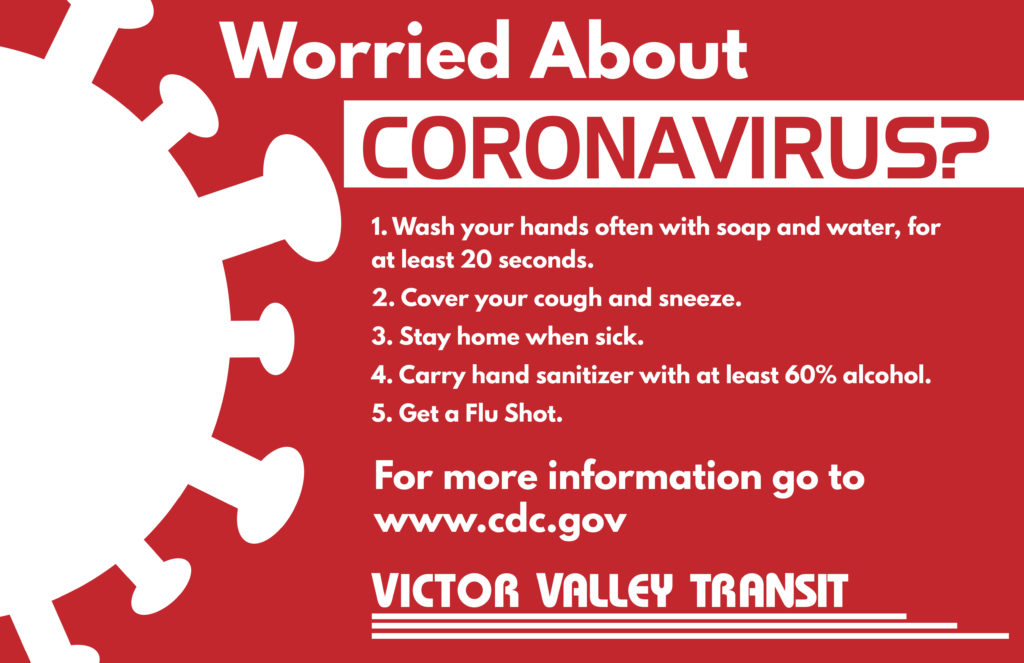
COVID-19, commonly referred to as the Coronavirus, is a new disease being monitored by the Centers for Disease Control and Prevention (CDC). It is so new that the CDC is still learning how it spreads, the severity of illness it causes, and to what extent it may continue to spread in the U.S.
How It Spreads
Person-to-person spread
The virus is thought to spread mainly from person-to-person, between those who are in close contact with one another (within about six feet), through respiratory exhales when an infected person coughs or sneezes. Small droplets can land in the mouth or be inhaled by people who are nearby.
Can someone spread the virus without being sick?
Some spread might be possible before people show any symptoms of actually being sick, but this is not thought to be the main way the virus spreads.
Can you catch it from infected surfaces, seat belt latches, and door handles?
It is possible to become infected by touching a surface or object that has the virus on it and then touching your mouth, nose, or eyes. The virus can live for up to 48 hours on handrails, seat belt latches, and handles. However, this is not thought to be the main way this virus spreads.
How easily the virus spreads
The spread varies from person to person based upon overall health and genetics. The virus that causes COVID-19 seems to be spreading easily and sustainably in communities (“community spread”) in some affected geographic areas.
What is Community Spread?
It means people have been infected with the virus in their community, even if they have not recently traveled anywhere.
The Symptoms
Symptoms will appear two to 14 days after exposure and can range from mild to severe. Watch for:
- Fever.
- Cough.
- Shortness of breath.
Avoid touching your face anywhere
How to Protect Your Employees and Clients
There is currently no vaccine to prevent Coronavirus disease 2019 (COVID-19). Here’s what you, your employees, and your clients can do to avoid spreading the virus, according to the CDC.
- Avoid close contact with people who are sick.
- Avoid touching your eyes, nose, and mouth.
- Stay home if you are sick.
- Cover your cough or sneeze with a tissue, then throw the tissue in the trash.
- Clean and disinfect frequently touched objects and surfaces using a regular household cleaning spray or wipe.
- Avoid shaking hands with your passengers.
- Follow CDC’s recommendations for using a facemask:
The CDC does not recommend that people who are well wear a facemask to protect themselves from respiratory diseases, including COVID-19.
Facemasks should be used by people who show symptoms of COVID-19 to help prevent the spread of the disease to others. The use of facemasks is also crucial for health workers and people who are taking care of someone in close settings (at home or in a health care facility).
- Wash your hands often with soap and water for at least 20 seconds, especially after going to the bathroom; before eating; and after blowing your nose, coughing, or sneezing. For more information about handwashing, see the CDC’s handwashing website.
- If soap and water are not readily available, use an alcohol-based hand sanitizer with at least 60% alcohol. Always wash hands with soap and water if hands are visibly dirty.
The CDC has also created a guide specifically for businesses and employers to plan and respond to coronavirus, which can be found here. A CDC guide with specific guidance for travelers can be found here.
Treatment of Coronavirus
There is no specific antiviral treatment recommended for COVID-19. People with COVID-19 should receive supportive care to help relieve symptoms. For severe cases, treatment should include care to support vital organ functions. People who think they may have been exposed to COVID-19 should contact their healthcare provider immediately.
Portions of this story initially appeared in Luxury Coach & Transportation (LCT) on March 5. Kevin Haegele/LCT and reprinted by Metro For Transit and Motorcoach Business